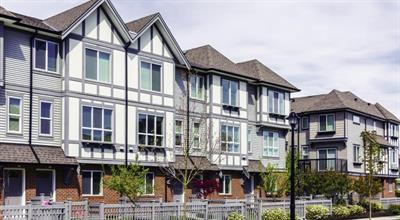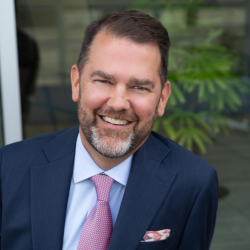Building your Financial Future
Apr 01, 2016
 One of the most regular questions I’m asked by retiring clients is, “How do we manage our investments once we’re retired?”
One of the most regular questions I’m asked by retiring clients is, “How do we manage our investments once we’re retired?”Of course, the challenge is to answer the question with language that can be easily understood. Yes, I could give all of the technical information and thought processes, but stories and analogies are much more useful. For many years, I struggled to find a good way to describe it until the apartment building was constructed across the street from our old offices… Inspiration!
A retirement investment portfolio is like owning an apartment building. Imagine that you have spent your career constructing a building one floor at a time. Each year, you saved money, the total investment pool grew, and you developed a sizable building with multiple floors and apartment units. And when you retired, you stopped your construction efforts and began filling the building with tenants. In the same way, at retirement, the focus changes subtly from growth to income… à la, the rent cheques.
In our case, we carefully select a handful of property managers to look after the building and collect the rent cheques. But unlike a real apartment building, our managers have the ability to review the tenants’ financials each quarter to ensure their rent cheques will continue to arrive without concern. And if the manager has concerns about an existing tenant, he can boot out the tenant and replace them with a tenant he likes better… eviction is swift and deliberate!
Over the long term, we feel confident in our belief that the building and the land will appreciate in value; however, we also know times will come when we need capital for major repairs and upgrades. This is where our planning needs to incorporate an “insurance layer”. This layer of investment— generally filled with Guaranteed Interest Certificates (GICs) — ensures that we always have cash for those “big bills” whenever they come, regardless of the state of the building and/or the tenants.
Typically, we like the “insurance” to be enough capital to cover 3 – 5 years’ worth of income/rent cheques. We hope to never need this capital, but events like 2008 may happen again and we really do not want to put any “mortgages” on the building, or be forced to sell off an apartment unit at a discount. Thus, this layer allows us the privilege of keeping the building intact and the rent coming in.
I know I am stretching the analogy a bit here. But, unlike a building, an investment portfolio affords us the ability to sell off an apartment unit or two at the time of our choosing. It is not uncommon, nor is it a particular problem to choose periods when we “stratify and sell” an apartment unit or two. If the building/units have appreciated in value, and inflation has caused expenses to increase, we often need this added capital to get through our later years. Yes, it means that we have fewer units to generate income, but when planned properly, we can afford to sell off parts of the building as needed without running the risk of selling them all off before “check out”.
Ideally, we are never in a position where we need to sell units in the building; however, if the building were not large enough when we started, we may need to do so without compromising one’s ability to pay their bills through retirement. Psychologically, I would suggest that there is great strength in keeping this analogy in one’s mind when looking at your retirement portfolio. We know that both investment portfolios and real estate values will go up and down, so why do building owners not seem to get too concerned when real estate values go down, whereas many investors become very concerned with declining portfolio values?
If you are confident that your investment portfolio is well-diversified amongst a number of established companies and your management team has a long track record for steady performance, would it not make sense to look at it the same way we would look at owning an apartment building? I think it does, especially if the portfolio is made up of companies that consistently pay dividends – the corporate equivalent of rent-paying tenants; especially if the portfolio is “well-insured” with a level of guaranteed investments.
When one retires at age 60 or 65, we may need this investment portfolio to last 30+ years – which is only a shade less time than an individual may have worked during their career. Thus, the investment portfolio we transition to in retirement often looks fairly similar to the one used during one’s working career. It just changes subtly to allow income to be more prevalent than capital growth.
Managing and caring for a building will always have similar factors to building it. But, with retirement we no longer need the pace and complexity of construction, now we just want quiet, polite, respectable tenants with steady, growing incomes. Are these not the kind of companies we want to own too?!
I hope you have found this analogy useful. Please feel free to contact your advisor to continue this discussion to see how it might apply to you.
You might also be interested in...
Business Owners
The most overlooked area of financial planning for business owners and incorporated professionals is the lack of integration between corporate and personal assets. When the majority of your assets are in your corporation you need very specific, specialized and personalized financial advice.
Learn More
Popular Categories
Search Insights
Book a meeting
Schedule a meeting with an RGF Advisor.







